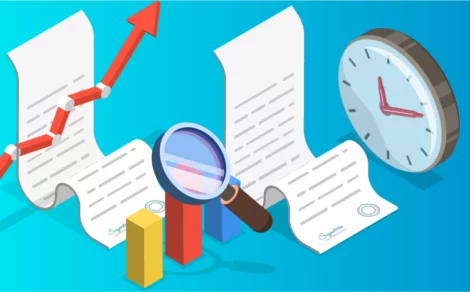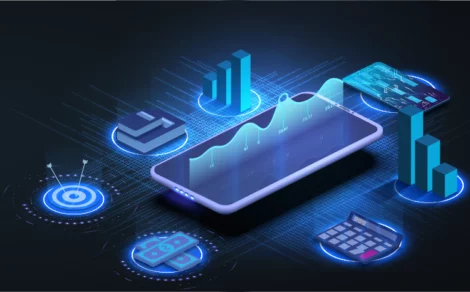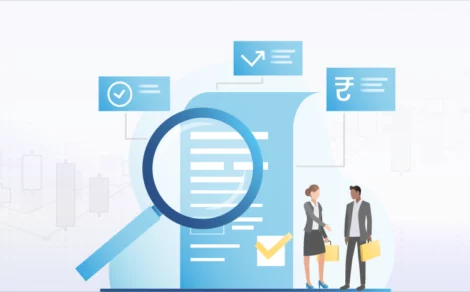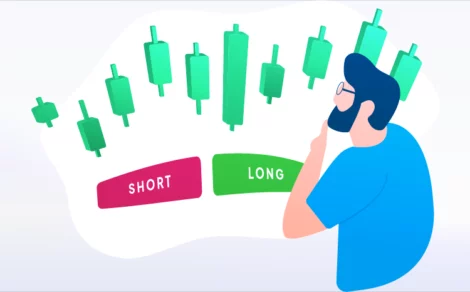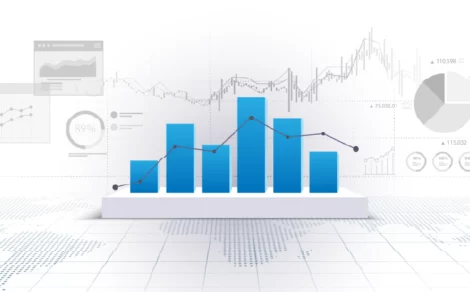Algorithmic trading, or algo trading, uses computer programs to automate trading decisions based on predefined rules. These programs analyse market data, identify trading opportunities, and execute trades at optimal prices. The process involves developing strategies, programming, backtesting, execution, monitoring, and optimisation.
Toruscope » Online Trading » Algorithmic Trading Explained: How to Automate Your Stock Market Strategy
Algorithmic Trading Explained: How to Automate Your Stock Market Strategy
By: torus
- 10.Apr.2025
-
0(0)
- 336
Traders and investors use technology to stay competitive in fast-paced financial markets. Algorithmic trading, also known as “algo trading,” uses computer programs to execute trades following specific rules. This method combines automation and artificial intelligence to make trading faster, more precise, and less prone to errors. It helps reduce risks and increase profits. In this article, we’ll explore what algorithmic trading is and how it works.
What is Algorithmic Trading?
Algorithmic trading uses computer algorithms to automate trading in financial markets. The algorithms analyse market data, identify opportunities, and place orders following predefined rules. The main aim is to take advantage of market inefficiencies and trade at the best prices. These algorithms can be designed to consider different factors such as:
- Price Movements: Monitoring changes to find the best time for making purchases or sales.
- Timing: Analysing the ideal timing to take trades to increase earnings.
- Volume: Assessing trading volumes helps measure market interest and liquidity.
- Technical Indicators: Using moving averages and the Relative Strength Index (RSI) to make trading decisions.
These automating processes allow traders to make high-frequency trades with less human involvement. This helps in minimising emotional decision-making and human errors.
How Does Algorithmic Trading Work?
Algorithmic trading works by following a sequence of steps:
- Strategy Development: Traders create a trading strategy using criteria like price thresholds, technical indicators, or statistical models.
- Coding the Algorithm: The strategy is then converted into a computer program using programming languages such as Python, C++, or Java.
- Backtesting: The algorithm is tested using historical market data. This helps evaluate its performance and make any needed adjustments.
- Execution: Once the algorithm is validated, it is deployed in live markets to monitor real-time data and automatically execute trades when predefined criteria are met.
- Monitoring and Optimisation: Continuous monitoring makes sure the algorithm works well and the periodic optimisation adjusts it for changing market conditions.
What are the Benefits of Algorithmic Trading?
Algorithmic trading has the following advantages:
- Speed and Efficiency: Algorithms can handle large amounts of data. They can execute trades very quickly to take advantage of quick market opportunities.
- Reduced Emotional Bias: Automated systems follow predefined rules to avoid emotional influences and impulsive decisions.
- Consistency: Algorithms help apply trading strategies consistently reducing performance variability.
- Backtesting Capability: Traders can test their strategies using historical data to see how well they work before using them in real markets.
- Diversification: Automation can manage multiple strategies in various markets and assets simultaneously, improving portfolio diversification.
Developing an Algo Trading Strategy
To create an effective algo trading strategy, you need to follow several key steps:
- Define Objectives: Define your financial goals, risk tolerance and investment horizon.
- Select Market: Select the type of asset you want to trade, like stocks, forex, or commodities.
- Identify Opportunities: You can use technical analysis, fundamental analysis, or statistical methods to find trading opportunities.
- Develop Algorithm: Create a programmable algorithm specifying entry and exit points, position sizing and risk management rules.
- Backtest Strategy: Assess the algorithm’s performance by analysing past data. Look for any issues or ways to enhance it.
- Optimise and Validate: Refine the algorithm using backtesting results.
- Deploy and Monitor: Implement the algorithm in live trading and continuously monitor its performance. Make adjustments as needed to adapt to changing market conditions.
Risks and Challenges in Algorithmic Trading
Algorithmic trading has many benefits but also comes with risks and challenges that traders must manage:
- Technical Failures: Relying on technology can result in financial losses due to system glitches, software bugs, or hardware malfunctions. It is important to have a strong and thoroughly tested infrastructure to reduce these risks.
- Market Volatility: Algorithms might not adjust quickly to sudden market changes, which can result in poor trading choices. It is important to regularly monitor and update algorithms to better react to market fluctuations.
- Regulatory Compliance: Traders need to stay updated on regulations and make sure their algorithms follow the law. Non-compliance can lead to legal trouble and fines.
Conclusion
Algorithmic trading revolutionises financial markets by providing efficiency, speed, and profit potential. Automated stock trading strategies offer precision and consistency for capitalising on market opportunities. Success in this field demands knowledge of technologies, a tested strategy, and adherence to regulations. Staying informed and adaptable is crucial for maximising algorithmic trading’s benefits. Beginners should research, use educational resources, and seek professional guidance.
Start your algorithmic trading journey with Torus Digital today, and take your trading to the next level!
Frequently Asked Questions
Algorithmic trading is legal in many countries like India, the United States, and the European Union. It is regulated to maintain market integrity and safeguard investors. Algorithmic trading in India is regulated by the Securities and Exchange Board of India (SEBI). Traders need to follow guidelines to ensure their trading is lawful and compliant.
SEBI mandates that:
Traders and brokers should get approval for their algorithms.
Orders must have a unique identifier for transparency.
Risk management protocols are in place to prevent market manipulation.
The best algorithmic trading platforms for beginners are:
Torus Digital
Zerodha
MetaTrader
QuantConnect
TradeStation
TradingView
These platforms provide backtesting, automated trade execution, and integration with different markets. If you’re looking for the best algorithmic trading software, ensure it has robust backtesting features, real-time market data access, and a user-friendly interface.
Algorithmic trading can be profitable, but success is not guaranteed. Profitability depends on the quality of the trading strategy, market adaptability, risk management, continuous monitoring, and optimisation. Institutional traders use advanced algorithms for stable profits, while retail traders face challenges like limited access to real-time data, slow execution speed, and regulatory constraints.
To enhance profitability, traders should backtest strategies, optimise algorithms, and follow market trends. Many successful traders now integrate stock market AI trading techniques, where artificial intelligence helps refine strategies and make real-time adjustments based on changing market conditions.
Related Reads
What is Slippage in Trading? Meaning, Causes & Impact Explained
In trading, timing and precision often define success. However, even when a trader believes...
By: torus
- 7 mins
- 01.Jul.2025
- 4(1)
- 96
What is an Option Contract?
Imagine having the flexibility to buy or sell shares at a fixed price, no...
By: torus
- 7 mins
- 01.Jul.2025
- 0(0)
- 43
Types of Financial Instruments You Should Know Before Investing
Before investing funds in any market, it is essential to understand what financial instruments...
By: torus
- 7 mins
- 01.Jul.2025
- 0(0)
- 39
What are Contracts for Difference (CFD)?
Contracts for Difference, commonly known as CFDs, are financial instruments that allow traders to...
By: torus
- 9 mins
- 01.Jul.2025
- 0(0)
- 39
Difference between Short Position & Long Position
Understanding the concepts of short and long positions is essential for anyone interested in...
By: torus
- 8 mins
- 01.Jul.2025
- 0(0)
- 38
Essential Trading Terminologies You Need to Know
Trading in financial markets opens a world full of opportunities. For many first-time investors,...
By: torus
- 8 mins
- 01.Jul.2025
- 0(0)
- 47
Disclaimer: The content provided in this blog is for informational purposes only and does not constitute financial advice or recommendations. The content may be subject to change and revision. Readers are encouraged to conduct their own research and consult with a qualified financial advisor before making any investment decisions. Torus Digital and its affiliates takes no guarantees whatsoever as to its completeness, correctness or accuracy since these details may be acquired from third party and we will not be responsible for any direct or indirect losses or liabilities incurred from actions taken based on the information provided herein. For more details, please visit www.torusdigital.com.
Tenneco Clean Air IPO Listing: Strong Market Debut with 27% Premium
Tenneco Clean Air India Ltd made a confident entrance into the public markets on...
By: torus
- 5 mins
- 19.Nov.2025
-
3.7(6)
-
336
Stock to Buy Today: November 19, 2025
The Indian stock market witnessed a mild decline on November 18, 2025, ending a...
By: torus
- 4 mins
- 19.Nov.2025
-
4.3(3)
-
336
Mirae Asset Infrastructure Fund NFO: A Sector-Focused Bet on India’s Growth
Mirae Asset Mutual Fund has launched a new equity scheme — Mirae Asset Infrastructure...
By: torus
- 4 mins
- 18.Nov.2025
-
4.3(6)
-
336
Emmvee Photovoltaic IPO: Shares Make Muted Market Debut, List Flat At ₹217
Emmvee Photovoltaic Power made a muted debut on 18 November 2025, listing flat at...
By: torus
- 3 mins
- 18.Nov.2025
-
3.7(6)
-
336

